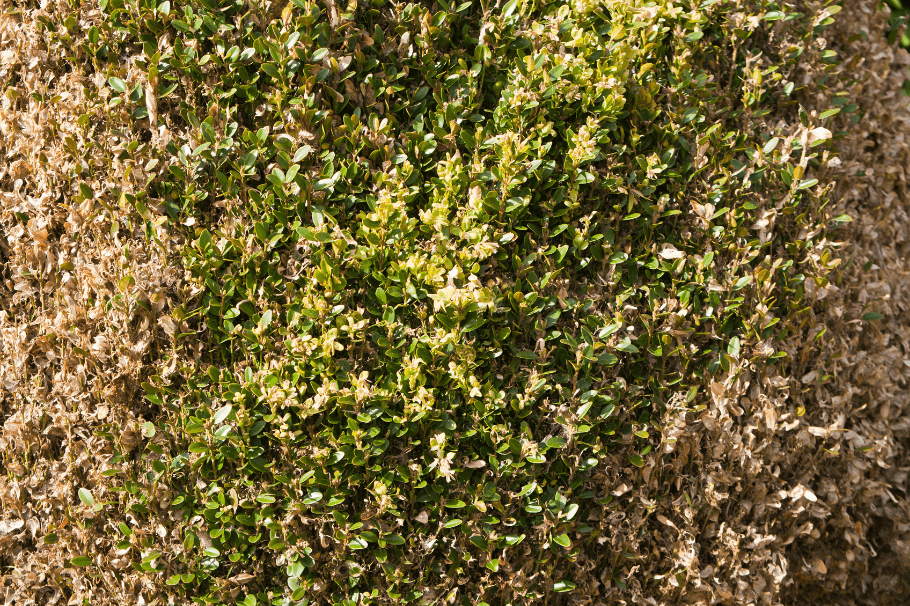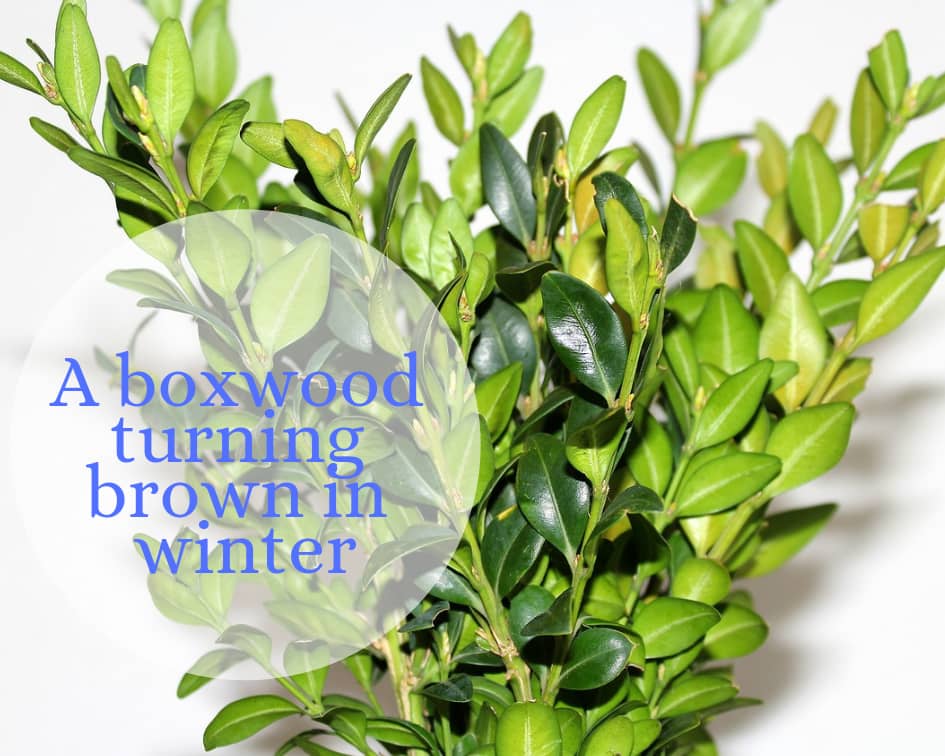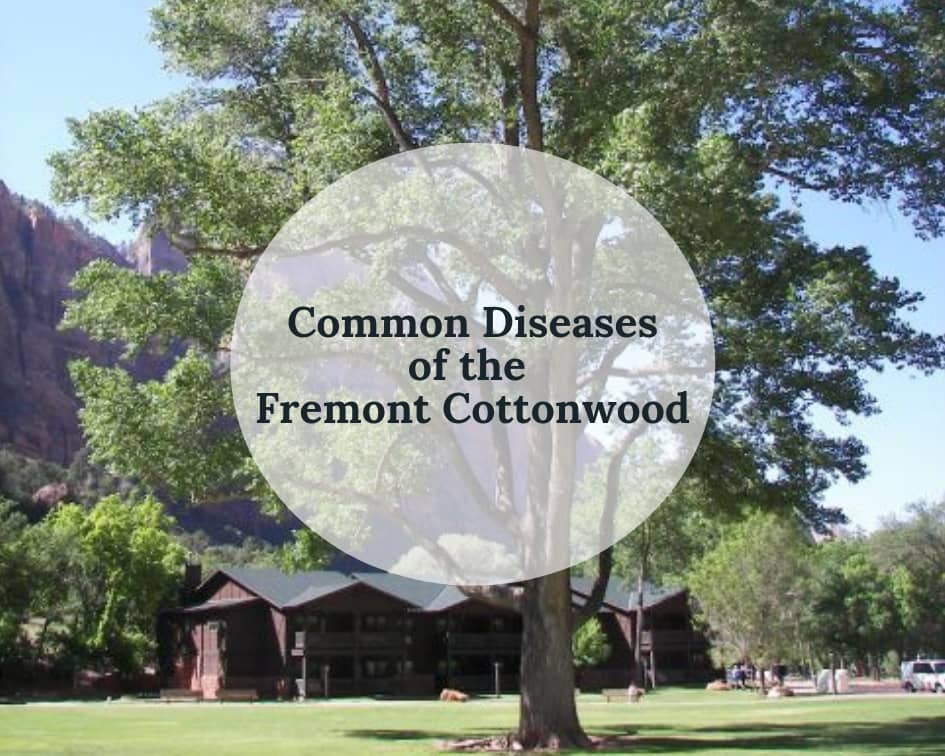This post may contain affiliate links. As an Amazon Associate we earn from qualifying purchases.
We received an email yesterday from a visitor to Gardenologist.org. She is alarmed by her boxwood turning brown and asked for help.
After all, boxwoods (Buxus spp.) are evergreen and supposed to be hardy to USDA zone 5 which includes Alaska and Nebraska, among other states.
So, why is her boxwood turning brown? Let’s see if we can figure it out.
 Winter burn
Winter burn
That’s the first thing that came to mind. Dormancy in winter is a survival mechanism and boxwoods enter the process typically in late fall or early winter. If warmer than normal temperature snaps the boxwood out of its dormant state, it may “assume” that spring came early and start a spurt of active growth – growth which is young and tender.
What happens when temperatures return to normal is that this growth dies and takes with it moisture from older parts of the plant as well, which makes it turn brown. It’s known as “desiccation.”
Our reader didn’t mention if the entire boxwood was turning brown or just portions. I’ve seen it happen both ways. For more examples of boxwoods with winter burn, visit the Missouri Botanical Garden’s website.

How to deal with the winter-burned boxwood
Pruning is the “cure” for what ails the winter-burned boxwood. And, it will need to wait until the danger of frost has passed in spring.
Sterilize sharp pruning shears in household disinfectant (such as Lysol) by soaking for five to 10 minutes. Rinse with clear water and allow them to air dry.
If the plant has tip-burn, you’ll need to just trim back the branches until you meet green foliage. Sometimes the wood will be cracked. In that case, cut those stems back to where the wood is healthy.
If the entire shrub is brown, cut it all the way down to within 12 inches of the soil.
Even this drastic measure doesn’t ensure that the boxwood will live. With that much burn, it may be beyond hope. But don’t give up on it. Let spring work its magic. Preventing winter burn of boxwoods
Preventing winter burn of boxwoods
Some boxwood cultivars are more tolerant of cold temperatures than others so when choosing a new one, check to ensure it’s good to go in your hardiness zone.
Then, choose a better planting site. Find an area that is protected from winter winds that tend to dry out even the hardiest perennial shrubs. Plant the boxwood a bit higher than you would think you should, about an inch higher than it’s growing in the nursery pot.
Then, just before the first frost is expected, spread 3 or 4 inches of mulch over the boxwood’s root zone to insulate the roots and keep them moist.
The experts at Missouri Botanical Garden recommend that you continue watering the boxwood as long as the ground isn’t frozen. Water deeply, to a depth of 12 to 18 inches, once a week.
If your planting site is subjected to winter winds, consider covering the boxwood with burlap (like this, at Amazon.com) over the winter.

But, it might be something else
Boxwood blight may be the culprit when a boxwood turns brown. Caused by a fungal pathogen (Cylindrocladium buxicola). Symptoms of an infection include
- Brown spots with dark borders on foliage that grow larger until the entire leaf is brown.
- Black vertical lesions on the plant’s stems.
- New growth exhibits the same symptoms.
- As the infection proceeds, the leaves will begin dropping from the boxwood.
The reason that blight wasn’t my first thought is that most fungal pathogens, including this one, require warm, humid conditions to thrive and spread. In fact, boxwood blight fungus thrives in a temperature range of 41 to 86 degrees Fahrenheit, according to Dr. Sharon M. Douglass at the Connecticut Agricultural Experiment Station.
Since there is no cure at this time for boxwood blight, prevention is key. Avoid overhead watering (or splashing of any variety) and keep the planting bed free of leaf debris. Dr. Douglas cautions that the fungus can survive in plant debris for up to five years.
Although fungicides aren’t proven to stop boxwood blight once a plant is infected, use them as a preventive measure along with the aforementioned cultural practices.
Plant pathologists at Virginia State University suggest Bonide’s Fung-Onil (available here) or Ortho Garden Disease Control. Or, contact your county cooperative extension for information on the proper fungicide to use for your area. You’ll find a cooperative extension directory for all 50 states here on Gardenologist.org.
Repeat the fungicide applications every week or two weeks, depending on the product’s label instructions, throughout the growing season.
Things you might like to know about the boxwood
- Boxwood is toxic to dogs, cats and horses. “Dogs and cats: vomiting, diarrhea; Horses: colic, diarrhea, respiratory failure, seizures,” according to the American Society for the Prevention of Cruelty to Animals (ASPCA).
- A survey of more than 4,000 landscape professionals proclaims the boxwood as America’s most popular shrub, according to BetterHomesandGardens.com.
- The boxwood arrived in this country in the mid-1600s, from Europe.
- More than 200 cultivars exist, with 178 available commercially. The most popular cultivar in the U.S. is English boxwood (Buxus sempervirens Suffruticosa)
For more information on boxwood blight, visit saundersbrothers.com and for general information about the boxwood, visit the American Boxwood Society online at boxwoodsociety.org.
Mention of a fertilizer or pesticide, or use of a pesticide or fertilizer label, is for educational purposes only. Always follow the product’s label directions attached to the container you are using. Be sure that the plant you wish to treat is listed on the label of the pesticide you intend to use. And observe the number of days between pesticide application and when you can harvest your crop.




